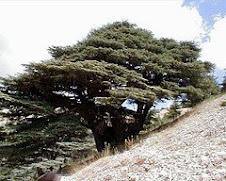Whooping cranes lifting spirits; Scientists counting record numbers of endangered birds at Texas wintering grounds
Jason Unrau, THE CANADIAN PRESS
YELLOWKNIFE, N.W.T.
One of the most majestic and endangered birds on the continent appears to be making a slow flight to recovery, say experts who see whooping cranes returning to their Texas wintering grounds in record numbers this year.
The cranes were on the verge of extinction in 1941 - a mere 15 birds could be accounted for. But last week Tom Stehn, whooping crane co-ordinator for the United States Fish and Wildlife Service, confirmed 262 had arrived at the Aransas reserve on Texas's Gulf of Mexico coast and four more were in transit.
"The comeback is what makes them really a symbol of conservation in North America," said Stehn.
After centuries of being squeezed out of their habitats by expanding agriculture, collected as specimens by European travellers and eaten during the leaner times of colonial settlement, the near-mythical migratory birds appear now to have benefited from the concerted efforts of wildlife biologists and strict protective legislation.
Since 1982, Stehn has been counting whooping cranes as they complete the 4,000-kilometre, four-to- six-week journey from their nesting grounds in the Northwest Territories, inside Wood Buffalo National Park.
"Every whooping crane now came from the genetics of those 15 birds and, to be that close to extinction ... it's a tremendous success story," he said. "I'm probably so excited it makes it sound like we have a million of them. There are only 266, so you don't have to be a biologist to know that they're still extremely endangered."
But slowly increasing sea levels and their impact on the cranes' blue-crab-rich marshland on the gulf are causing Stehn some new concern.
And if marshes start drying up in Wood Buffalo National Park from warmer temperatures, "the crane could go downhill," he says.
Brian Johns, wildlife biologist and whooping crane co-ordinator with the Canadian Wildlife Service, monitors nesting habits and counts the nesting pairs and resulting offspring.
Johns counted 73 pairs that produced 80 offspring this year. Of those, 40 survived until migration and 39 made it from Wood Buffalo park to Texas last week.
Johns said the marshes where the cranes rear their young in Canada's largest national park have been under pressure from warmer springs and summers, but the climate change may actually be helping the birds thrive, at least temporarily.
"At hatching time is when a lot of young will die because of cool, wet weather during brooding time and the young can't keep warm on their own," Johns said.
"Now this June we didn't have any cold or wet weather - that was a good thing. But you can only tolerate no rain for a certain length of time, then the wetlands start drying up and the whole area gets more accessible to predators like foxes and wolves."
Back 150 years ago, the whoopers had more than just foxes and wolves to contend with. Settlers moving into the American Midwest transformed much of the wetlands to farmland. Cranes landing in a field to eat seeds often found themselves in a shooting gallery. It's believed the population was only around 1,300 even then - still considered endangered by today's standards.
Johns estimates that, at their height, whooping cranes numbered "a highly optimistic 10,000."
European curiosity-seekers chipped away at that over the centuries.
"I've got a listing of whooping crane specimens all around the world and you wouldn't believe it - there's several hundred of them in museums in Europe alone," he said.
Ron Heflin the canadian press file photo A whooping crane searches for food at the Aransas National Wildlife Refuge near Rockport, Tex. The Lone Star state's waters are wintering grounds for the species, with record numbers returning there this year.
December 17, 2007
Check also:
Solar Energy as a Path to Peace
Guide to Best Renewable Power Stocks
Writings of Yuya Joe
The US Propaganda Campaign to Smear Venezuela’s New President Delcy
Rodriguez
-
The US “regime change” operation against Venezuela has been defeated. The
Bolivarian Revolution remains firmly in power. Now, Washington’s campaign
again...
3 hours ago



No comments:
Post a Comment